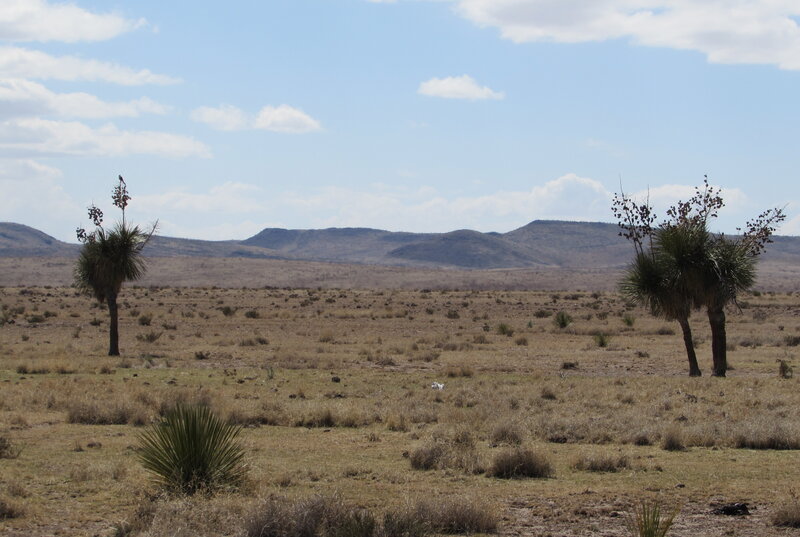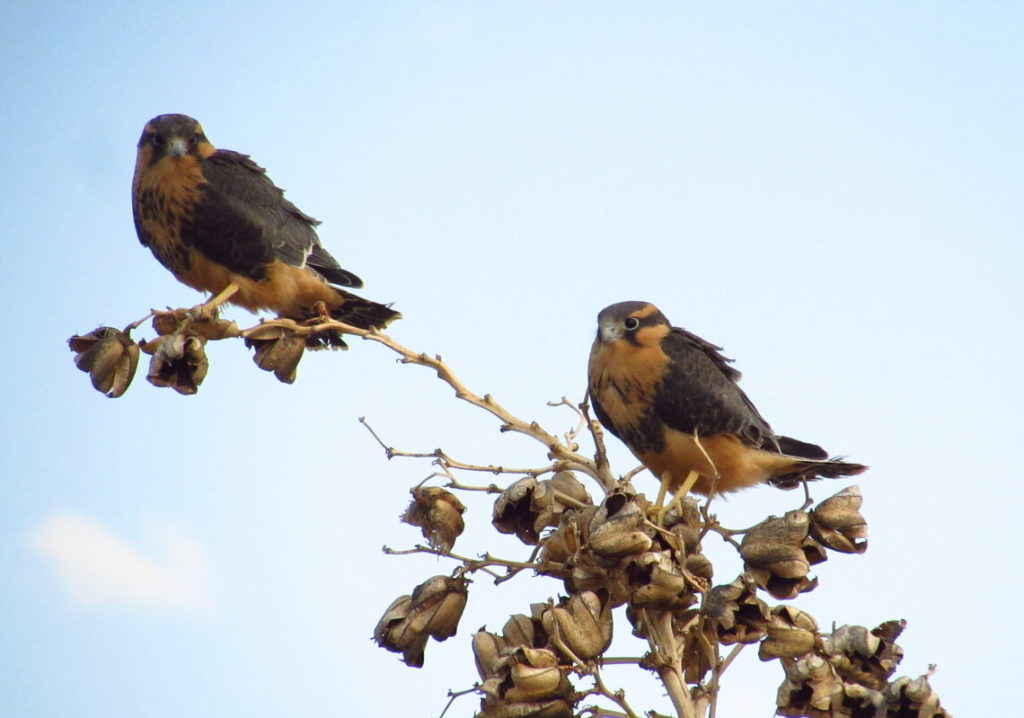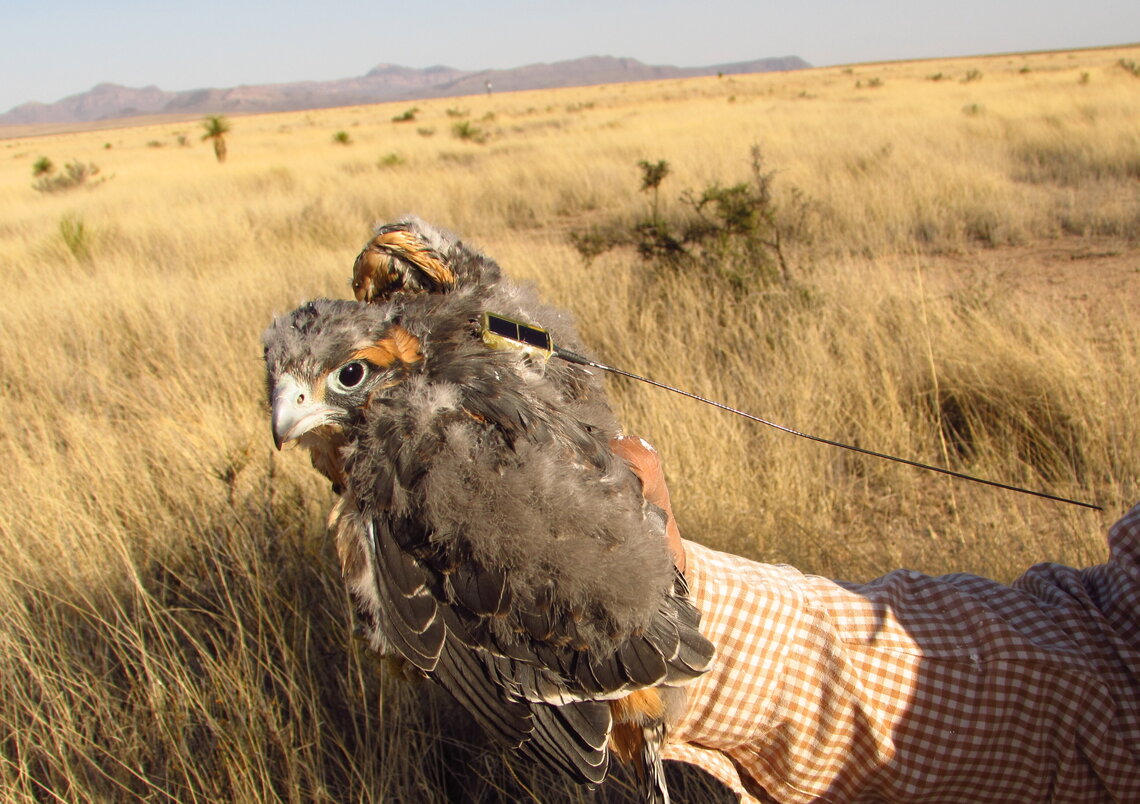Paloma Tutuli Montijo Tautimes, Graduate student in Ecology, Universidad Estatal de Sonora
The Northern Aplomado Falcon (Falco femoralis septentrionalis), is the subspecies of Aplomado Falcon whose main distribution covers the southwestern United States and the eastern coasts of Mexico. In both countries it is in some category of risk, so its conservation is of common interest. In this sense, binational cooperation has been key in the conservation of this bird. The study of Northern Aplomado Falcon populations and the collection of individuals in Mexico to use for reproduction in captivity during the 1980s allowed for their reintroduction in South Texas. However, attempts to recover the species through reintroductions in the Chihuahuan Desert in New Mexico and western Texas have not been successful.

A small, isolated population persists in the desert grasslands of Chihuahua, Mexico which is of great importance as it is believed to be the last remnant population of Northern Aplomado Falcon’s in the Chihuahuan Desert. However, a worrying decline has been observed in reproductive pairs. Studies in the area report that from 24 active territories that existed in 2000, that amount declined to only 5 in 2015. The main threat identified is the destruction of habitat due to agricultural expansion, which has already converted about 70,000 ha of natural grasslands into irrigated fields.
Therefore, more studies are necessary to understand the ecology of the Northern Aplomado Falcon in the region. It is important to study the home range since their use of habitat is a determining factor for survival. Some home range studies of adult birds have been conducted, but little attention has been paid to juveniles during the post-nesting dependency (PD) period. This stage ranges from the bird’s first flights, to the breaking of family ties. It is characterized as a learning period in which flight and hunting techniques are developed, which is why a high mortality usually occurs.
To learn about the habitat requirements of juvenile Northern Aplomado Falcon during this critical period, the Universidad Estatal de Sonora and the U.S. Fish and Wildlife Service, in collaboration with IMC Vida Silvestre, A.C., conducted a study during the 2019 reproductive season in the central area of Chihuahua. For this, Argos satellite transmitters (5g Microwave Telemetry PTT) were placed on 6 chicks (4 females and 2 males) at an approximate age of 28 days.

The localities obtained show how the juveniles remained close to the nest during the PD period until they dispersed. However, one female made explorations no further than 50 km and then continuously returned to the territory. As there was no official dispersal, this individual was not considered in the analyses. The PD period lasted on average 79 days (range: 68 – 102 days). Using kernel density estimators at 95%, an average home range of 170 km2 (range 86–288 km2) was estimated. Contrary to what was expected, a high degree of overlap between the juvenile home ranges was determined. It was believed that the territorial behavior of adults would keep strange juveniles away, but given the results, one might think that adults do not perceive juveniles as a threat.
The distance traveled by the juveniles at the time of dispersal, which ranged between 42 and 115 km, was also analyzed. Through a multiple linear regression analysis, evidence suggested that the dispersion distance is inversely related to the size of the home range, i.e. the juveniles with a larger home ranges during the PD period disperse a smaller distance. In turn, sex and hatching date had no effect on the size of the home range. Juveniles that were born early in the season were also found to disperse at an older age.
This information may be used to create habitat conservation and management strategies in Chihuahua, since the home range used by the Northern Aplomado Falcon during the PD period indicates that the area surrounding the nest is what urgently needs to be conserved.
To read more about this project, please visit our article first published in 2018. Learn more about Aplomado Falcon conservation in Mexico by visiting, Species Conservation Action Program (PACE): Aplomado Falcon (Falco femoralis).

